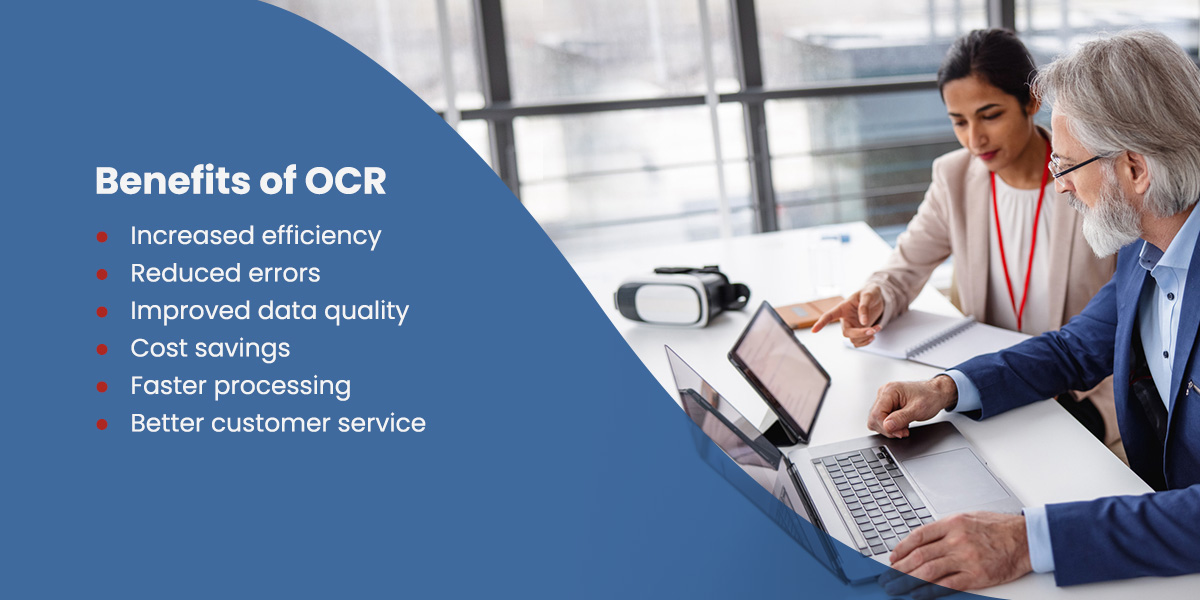
Managing invoices and financial workflows can be time-consuming and error-prone in today’s fast-paced business world. Fortunately, there’s a solution that can streamline the process and improve accuracy — OCR invoice scanning.
OCR stands for optical character recognition and allows businesses to automate invoice processing, reducing errors and improving efficiency. In this blog, we’ll dive into what OCR invoice scanning is, how it works and what benefits it can provide for businesses of all sizes.
Whether you’re a small business owner or part of a large enterprise, understanding OCR invoice scanning can help you save valuable time and resources while ensuring accuracy in your financial workflows.
An OCR invoice is typically a digital copy of a physical invoice that has been scanned or uploaded into a software application that uses OCR technology. OCR technology is commonly used in applications such as document scanning, invoice processing and text recognition, enabling faster and more accurate data entry and automation — this is known as scan to OCR. It’s a technology that lets computers recognize and interpret characters, words and symbols from a scanned image or a digital document and convert them into machine-readable text.
A company or organization can use OCR invoice recognition technology to automate invoice and financial document processing. This technology has revolutionized the way businesses handle invoices by reducing the need for manual data entry and increasing efficiency. With OCR invoice recognition, businesses can automatically pull out critical data from invoices, such as vendor name, invoice number, invoice date and line item details. This data can then populate into accounting software or other financial systems, streamlining the invoice-processing workflow.
In addition to improving efficiency, OCR invoice recognition can also reduce errors in the invoicing process. Manual data entry is prone to errors such as typos, incorrect data entry and missed information. OCR technology can help eliminate these errors by automating the data extraction process and ensuring accurate data entry every time.
Many industries use OCR technology for a wide range of applications, including but not limited to:
OCR invoice scanning and processing involve using OCR technology to extract data from invoices and other financial documents. OCR technology uses sophisticated algorithms to analyze and recognize text characters within images. This technology lets computers read text on scanned or digital images and convert it into a machine-readable format. You can use OCR technology to extract text from documents.
OCR technology works by analyzing an image and identifying patterns of light and dark pixels that represent text characters. The technology then matches these patterns to a database of known characters to determine the most likely character for each pattern. We call this process character recognition. Once OCR technology recognizes the characters, it can create a digital text document using them.
OCR technology can also recognize other elements of an image, such as tables, images and forms. This makes it possible to extract data from these elements and use it to automate business processes such as invoicing and data entry.
OCR invoice processing involves several steps:
With increased accuracy and speed, OCR technology has improved significantly over the years. OCR engines can recognize text characters in various fonts, sizes and styles, making it possible to extract data from a wide range of documents accurately.
In conclusion, OCR technology is a powerful tool helping businesses automate invoicing and data entry processes. By using OCR invoice scanning and processing, businesses can save time and reduce errors in their financial workflows. With advances in OCR technology, businesses can expect even greater efficiency and accuracy in the future.

OCR technology offers several benefits to businesses looking to automate their invoice processing and other financial workflows. Here are some of the critical benefits:
Overall, OCR technology is a powerful tool that can help businesses improve their financial workflows and achieve significant cost savings. By automating invoice processing and other financial tasks, businesses can increase efficiency, reduce errors and improve financial data quality. With the continued advancement of OCR technology, businesses can expect even more significant benefits in the future.
Managing invoices and financial workflows can be daunting in today’s fast-paced business environment. That’s why OCR invoice scanning and processing are becoming increasingly popular among businesses of all sizes. With the help of OCR technology, businesses can automate their invoice processing and data entry tasks, improving accuracy, reducing errors and saving valuable time and resources.
As a leading provider of cloud factoring software, FactorFox understands the importance of efficiency and accuracy in financial workflows. We designed our software to help factor companies efficiently manage invoices and clients while ensuring high security and advanced support for intelligent factoring. To see how FactorFox’s software can transform your financial workflows, schedule a demo today.